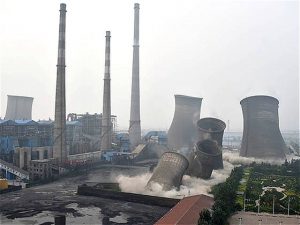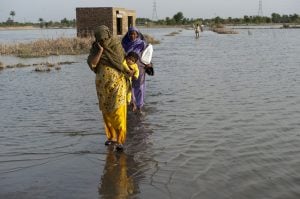Water, food, waste, emissions – from whatever measure you can think of, the 18-odd million people who live in New Delhi have large footprints, with most of its needs supplied by neighbouring areas. The danger of this near-total dependence on the hinterland is now being underlined as members of the Jat community in the adjacent state of Haryana stage a series of violent protests to support their demand for job reservations.
Within two days of the agitators blocking and breaching the Munak Canal that brings water to Delhi from the Yamuna River upstream, taps went dry in north, central and west Delhi. Trucks were blocked as well, so vegetable prices rocketed upwards. The situation started limping back to normal only after the Indian Army was called in to patrol the canal. The soldiers also took over from policemen the role of clearing at least a few highways.
As the state government in Haryana accepted the demand for job reservations and the agitation started to peter out, vegetable prices came down to pre-agitation levels, but it will take longer before the water supply situation improves.

A large percentage of Delhi’s water supply comes from the Yamuna River to the Haiderpur and Wazirabad water treatment plants (WTP) (see chart). Within the first days of the agitation – now ten days old – this water became unusable. Factories upstream were forced to close their effluent treatment plants due to the agitation, so the water in the river had far too much ammonia for the treatment plants in Delhi to handle. The plants were forced to close down their intake gates.
As a result, as far as the supply from the Yamuna was concerned, Delhi became totally dependent on the Munak Canal, which the agitators promptly blocked. Chased away by policeman from one blockade point, they went to another, and also dug breaches on the earthen walls of the canal branch that connects Delhi.
After an estimated 60% of taps in the capital went dry and the Delhi government went to court to seek a guarantee for its water supply, soldiers were finally deployed all along the canal, engineers from the Indian Army made some quick repairs, and the authorities could release water into the canal once more on February 22. It still takes around 36 hours before the water reaches various treatments plants in Delhi.
The only part of the capital that escaped the shortage was east Delhi, since it gets its water from the Upper Ganga Canal. A portion on the water flowing from the Ganga is also supplied to South Delhi. In addition, South Delhi pumps up more groundwater than other parts of the city, though all parts pump up massive amounts from the 107 underground reservoirs and aquifers, with little check or restraint.
Overall, at the height of the crisis the Delhi Jal Board could supply only 240 MGD, much of it through water tankers that were sent to around 2,000 neighbourhoods. Kapil Mishra, water minister in the Delhi government, described the situation as critical and talked about the need to ration water supply.
Residents who could afford it promptly stocked up on mineral water and went to their gyms for a shower.
Shortage now, more shortage later
The crisis once again focussed attention on the fact that even at the best of times the Delhi Jal Board supplies 903 million gallons per day (MGD), less than the required 1,020 MGD. The supply covers 2.71 million homes, 81.3% of homes registered in the capital. According to projections in the Master Plan 2021 of the Delhi Development Authority (DDA), the capital’s population will rise to 23 million by 2020 and the water demand will be 1,380 MGD. There is no plan to bridge this gap, except dependence on even more distant sources of potential supply, such as the Renuka dam planned in Himachal Pradesh.
Asked about Delhi’s huge water footprint, Manoj Misra – head of the activist group Yamuna Jiye Abhiyan – said, “As far as water dependency is concerned, Delhi is like an island. So the available water needs to be managed better. The water should be collected and stored in lakes on the floodplains of Yamuna during monsoon so that the same water can be released in the city during such times of scarcity. Both DDA and Delhi government should tell people why this has not been done yet.”
Misra also pointed out that the water flowing through the Munak Canal would have flown naturally down the Yamuna to Delhi if there had been no canal. “Delhi is withdrawing the same water from the canal what it used to get naturally from Yamuna. That water has been diverted to the canal through Hathnikund while earlier it used to flow freely in Yamuna. This has made Delhi so dependent on the Munak Canal. If Delhi frees itself from this dependence, then such a crisis can be averted.”
![<p>Indian soldiers guard the Munak canal [image by AFP]</p>](https://www.thethirdpole.net/content/uploads/2016/02/munak_canal_22_Feb_2016_AFP-300x185.jpg)



